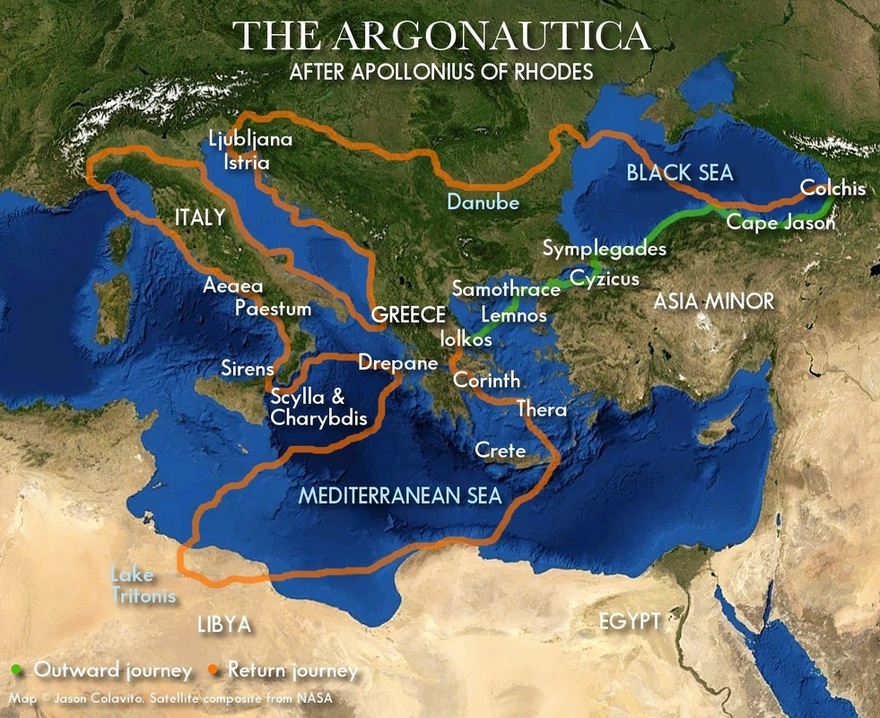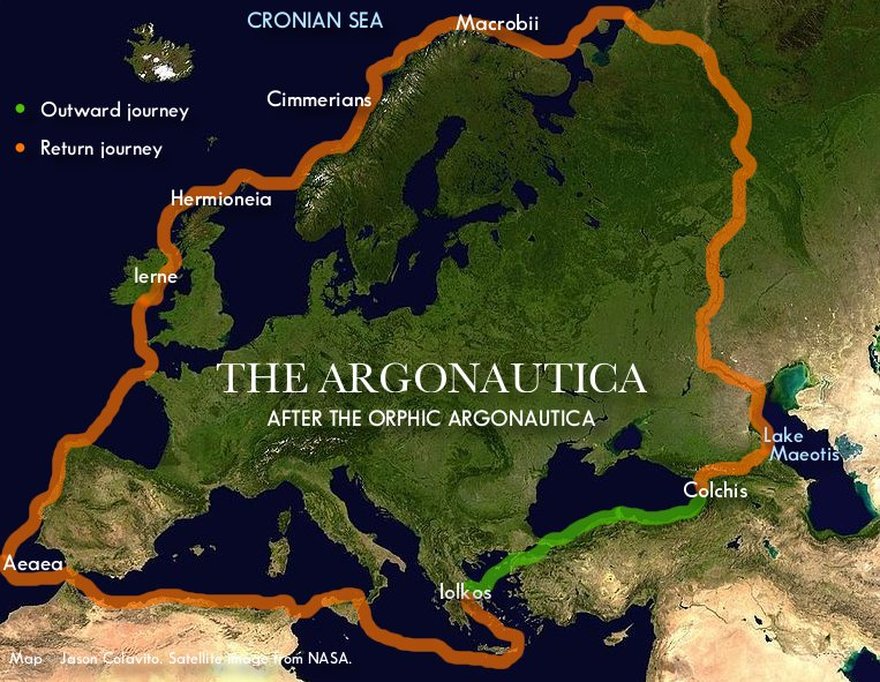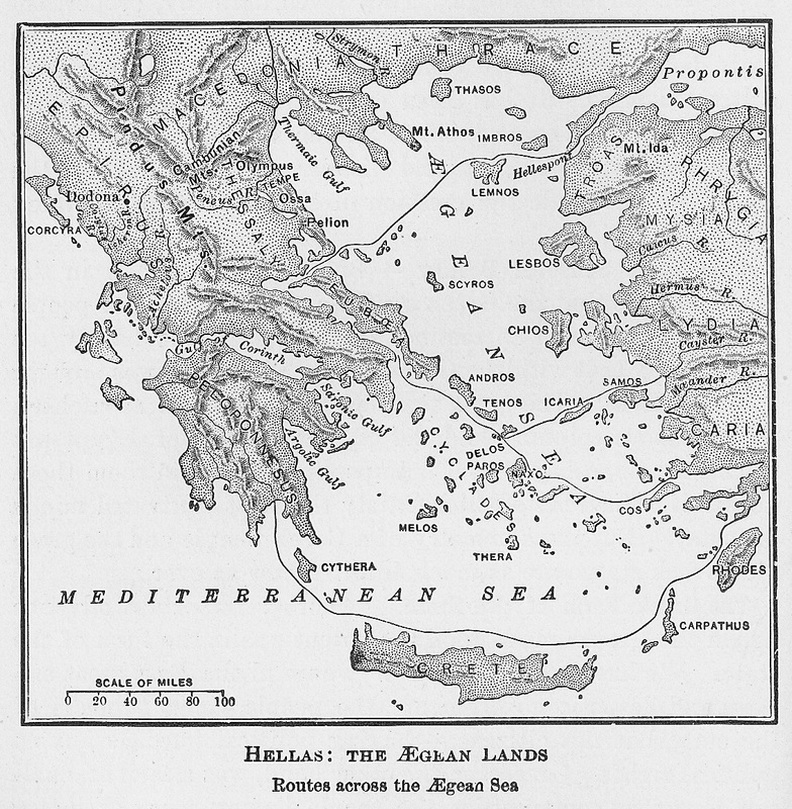MAPS & ROUTES
The Argonauts' route from Greece to Colchis is, with few exceptions, remarkably consistent across the Greek poets and historians. By contrast, the Argonauts' return route has been the subject of a bewildering array of interpretations, largely due to the changing Greek understanding of geography and the complications greater knowledge caused when trying to map a myth developed in an age of ignorance onto real terrain that rarely matched the speculation of the ancient bards. Below are a few of the many interpretations of the Argonauts' return route, beginning with the classic route as given by Apollonius, followed by many earlier and later variants.
Route of Apollonius' Argonautica
Route of the Argonauts in Pindar's Pythian 4
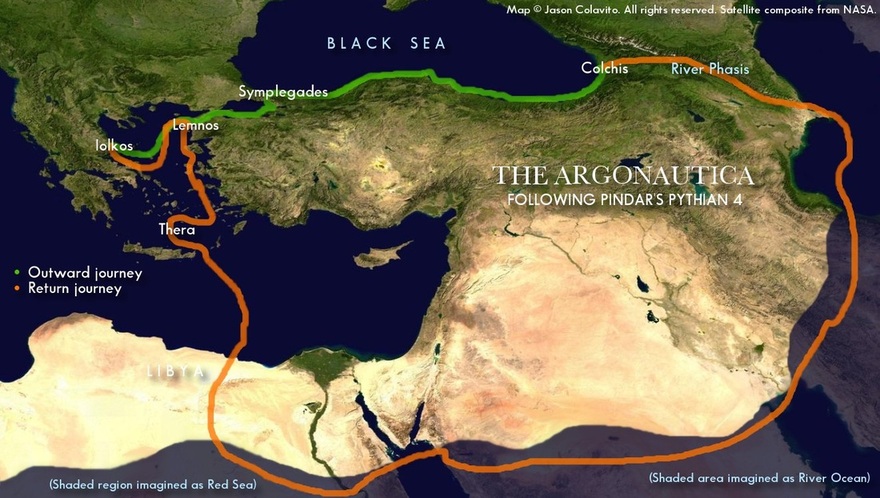
Route of the Argonauts in Pindar's Fourth Pythian Ode. Pindar sent the Argo home via the Ocean and Red Sea, waters thought in his day to lie south of Libya. Pindar also sent the Argonauts to Thera and Lemnos, against tradition, on their homeward journey. Click to view full size. (Map © Jason Colavito / Satellite composite image from NASA)
Route of the Argonauts According to Hecataeus of Miletus
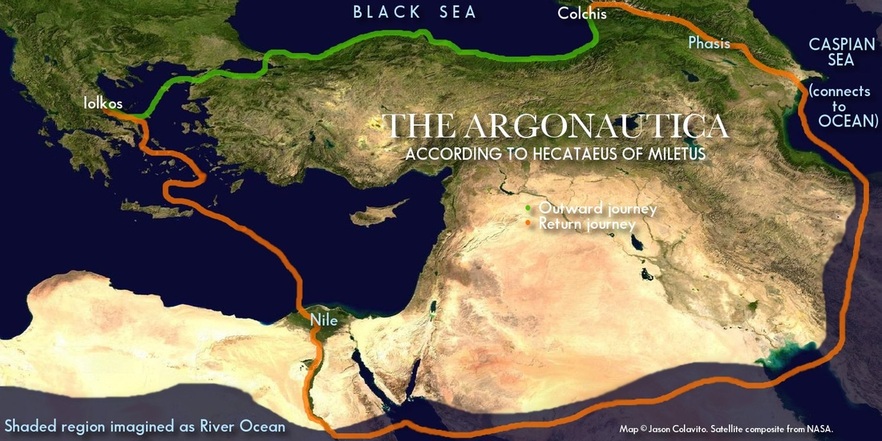
oute of the Argonauts according to 5th c. BCE geographer Hecataeus. His route largely agrees with Pindar, sending the Argo along the River Ocean to the south. However, unlike Pindar, who had the Argonauts carry the Argo across Libya, Hecataeus has them sail up the Nile, which he believed connected the Ocean to the Mediterranean. Click to view full size. (Map © Jason Colavito / Satellite composite image from NASA)
Route of the Argonauts According to Herodorus
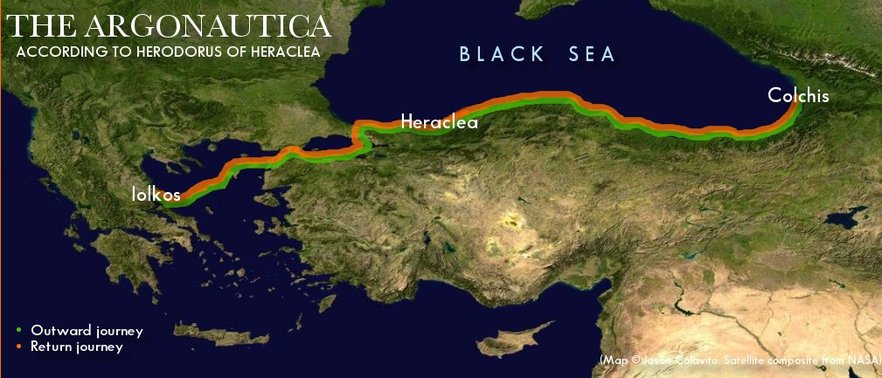
Route of the Argonauts according to Herodorus of Heracles (not to be confused with Herodotus the historian). Herodorus, a rationalizer, believed the Argonauts traveled the same route both ways, conveniently gracing his hometown with their glorious presence twice, with Idmon and Tiphys both dying there. Click to view full size. (Map © Jason Colavito / Satellite composite image from NASA)
Route of the Argonauts According to Timaeus
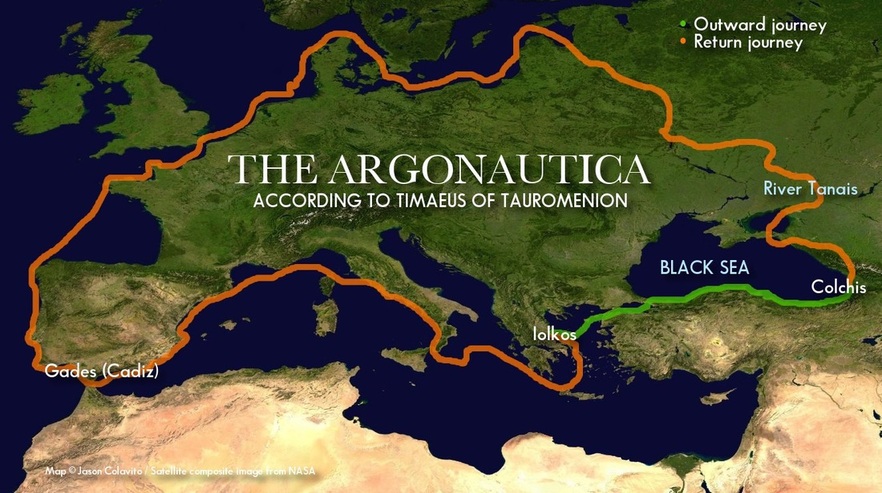
Route of the Argonauts according to 3rd c. BCE historian Timaeus of Tauromenion, in Sicily. He believed the Argonauts sailed up the Tanais (likely the Don) and its connecting rivers until reaching the Ocean, sailing with the land to their left until reaching Cadiz and the Mediterranean. Click to view full size. (Map © Jason Colavito / Satellite composite image from NASA)
Route of the Orphic Argonautica
Revised Orphic Argonautica after the Analysis of Judith Bacon (1931)
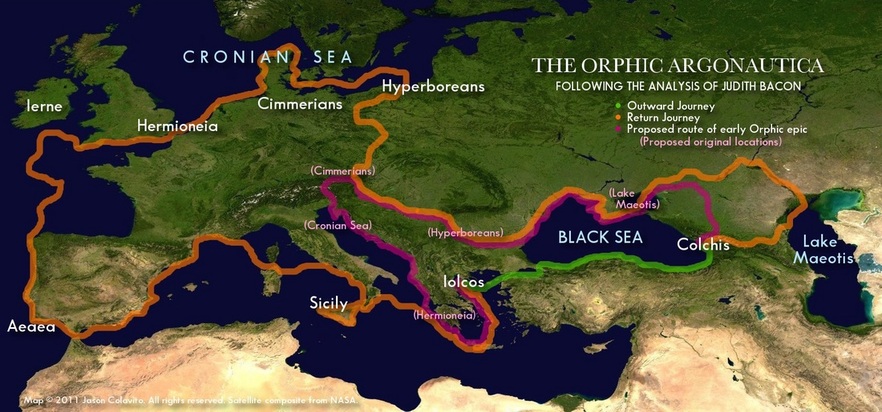
Route of the Argonauts in the Orphic Argonautica as interpreted by Judith Bacon in 1931. Bacon believed the Orphic poem's return route (orange) was likely based on an older traditional route (purple), and that neither traveled as far north as the Arctic. Click to view full size. (Map © Jason Colavito / Satellite composite image from NASA)
Henriette Mertz's Theory
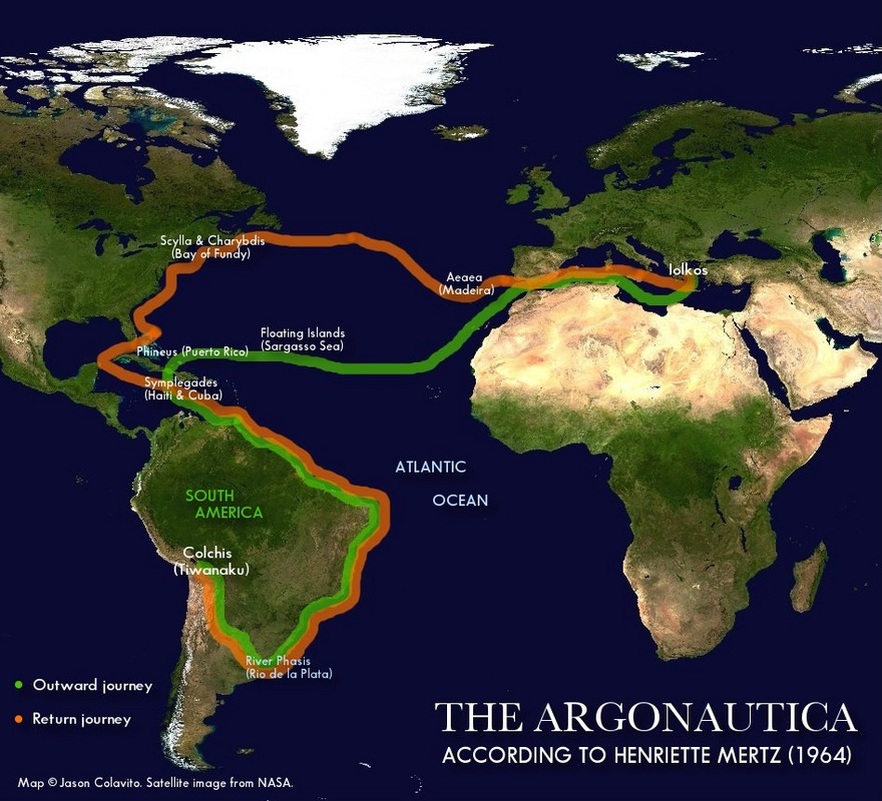
American attorney Henriette Mertz proposed in 1964 that the Argonauts' voyage took place in the Atlantic Ocean, with Colchis being the ancient Bolivian city of Tiwanaku. Unfortunately, Tiwanaku would not be built for a thousand years after Pindar wrote of the Argonauts' voyage. Click to view full size. (Map © Jason Colavito. Satellite composite from NASA)


